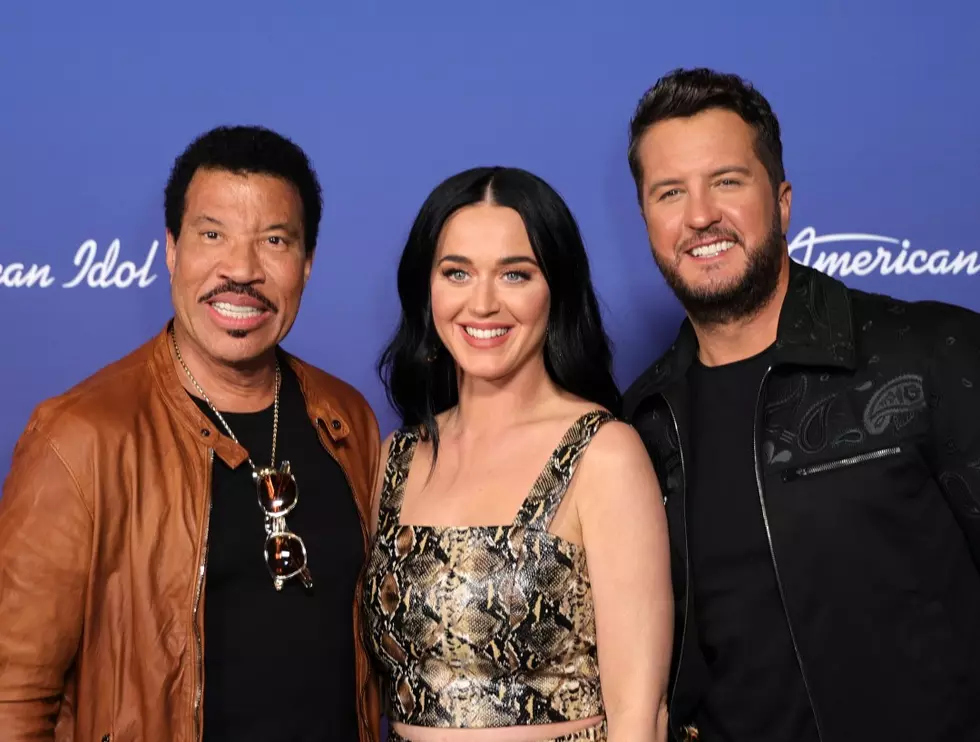Kenny Rogers’ Lionel Richie-Penned Hit ‘Lady’ Sums Up Their Genre-Defying Greatness
In the annals of singer-songwriter collaborations, there is anthemic greatness, and then there is “Lady.”
Kenny Rogers’ Lionel Richie-written, ultimate power ballad bittersweetly celebrates its 41st anniversary on Tuesday (Sept. 29). Studying the core reasons the song has sustained its popularity for four decades -- and will be forever beloved -- offers a sense of what made Rogers (and, similarly, Richie) such a dynamic, genre-defying artist.
Initially, “Lady” was suggested to Richie by Rogers as a “fun juxtaposition,” inspired by Ray Charles’ decade of country-tinged hits spurred by his influential 1962 double album, Modern Sounds in Country & Western Music. “I wanted Lionel and me to make country music with R&B tracks,” explained Rogers in a 2005 interview. “It was such a neat thing that Ray Charles did when he did R&B songs to country tracks.”
The song was one of two previously unreleased singles on Rogers’ Greatest Hits compilation album, released on Sept. 23, 1980, to punctuate a five-year run wherein the Gambler’s bet on himself after leaving the First Edition in 1976 yielded 10 million solo albums sold and 10 Top 10 crossover pop hits.
Richie, at the time, was enjoying a bizarrely similar space of musical success: Five years had elapsed since, on the back of Richie-penned love ballads, Motown’s ‘70s superstars the Commodores had morphed from the hunky funk titans behind “Brick House” to the milquetoast soul crooners of “Three Times a Lady” fame. As Rogers was in country music, the Commodores were R&B heavyweights at the tail end of the 1970s, also selling 10 million albums with 10 Top 10 crossover pop hits.
To the untrained ear, Rogers’ “Lucille,” “Coward of the County” and "Don't Fall in Love with a Dreamer" don’t share much in common with “Easy,” “Still” and "Just to Be Close to You;" however, these six songs bear twin levels of sophistication and consistency in their lyrics, which both convey passion and tell a story. Separately, both Richie and Rogers noted on a multitude of occasions that when it comes to love songs, they specialize in words that “every man would like to say and that every woman wants to hear.” (To wit, in an interview for Richie’s 1998 episode of VH1’s Behind the Music, legendary music producer David Foster said, “How many artists can have a hit every time out? An automatic hit, where you don’t have to beg the radio stations to play it. That’s the magical hold he had.”)
“Magic” is ultimately the best way to describe how “Lady” evolved through its collaborative development between the two superstars. The song’s stunning story emerged on an episode of The Bobby Bones Show soon after Rogers’ death, and when contextualized with historical notes, the need for Rogers and Richie to, as Rogers noted, “come from R&B and country to meet somewhere in pop” makes sense.
PICTURES: Kenny Rogers Through the Years
By 1980, the Commodores not named Lionel Richie had grown tired of being more renowned as balladeers than funkateers. The group comprised musicians who could sing, rather than singing musicians, thus making their pop transition internally fractious, but crossover pop chart success is more lucrative than R&B chart success alone, and after 1975, Commodores ballads were charting an average of nine times higher than Commodores funk tracks on the Billboard Hot 100.
Richie’s songwriting credits on the pop hits entitled him to significantly greater earnings for singles and albums than his bandmates. Stuck between a rock and a hard place, he began to look outside the Commodores to place his pop-appealing torch songs.
Similarly, after leaving country-rock fusion band the First Edition in 1976, Rogers found himself at a fork in the road and chose what, on the surface, appeared to be a road less traveled. However, as Rogers noted in that previously mentioned 2005 interview, “I'm not a great singer, but I'm a great storyteller with numerous musical influences. Yes, I’m a country artist. But my musical background includes jazz, folk and rock.” In other words, he had a mainstream, polished outlaw image and smart choice of soulful stylings with what modern listeners would call “yacht rock” appeal.
By 1980, Rogers was three years into his fourth marriage to the Georgia-born Hollywood actress Marianne Gordon. “Kenny was so stunned that someone like himself had married ‘a lady,’” Richie recalls Rogers told him at the Captain & Tennille’s Rumbo Records Studios in Los Angeles, Calif., while Rogers was attempting to work through the intriguing mess of genius Richie pitched before the recording session for “Lady.”
“[“Lady”] was supposed to be for the Commodores. They didn't want any more of my love songs, and instead, they opted for the religious song I wrote, “Jesus Is Love,”” Richie continues. “I'm a mumbler when I write songs. I had “Lady”’s first verse written as a song called “Baby,” and instead of words, I had just the word “Baby,” followed by the melody’s bars, [which I hummed].”
After hearing Rogers’ story, though, Richie changed the song’s name to "Lady" on the spot. "I'm no fool!" says Richie, laughing.
Upon its release, “Lady” became the first song to top Billboard’s country, Hot 100, adult contemporary and soul singles charts. This feat is unique, though two other essential pop/soul/country hybrid songs -- Whitney Houston’s 1992 cover of Dolly Parton’s “I Will Always Love You” and Ray Charles’ 1962 cover of Don Gibson’s “I Can’t Stop Loving You”-- achieved similar success as, simultaneously, No. 1 Hot 100, Adult Contemporary and R&B chart singles for five consecutive weeks. (Ironically, as previously mentioned, Rogers’ intention in recording “Lady” was to, ideally, mirror the appeal of “I Can’t Stop Loving You.")
After recording “Lady,” Rogers told Richie the song “is one of those very special songs that comes along every so often," and forty years later, his statement holds. “Lady” was nominated for Song of the Year at the Grammy Awards, and its success spurred another five-year run wherein Rogers won five American Music Awards and Richie won four Grammys. Together, the tandem achieved 26 No. 1 singles and 50 million albums sold between them (including Rogers' 1983 duet with Parton, "Islands in the Stream," and Richie's work as the songwriter behind the iconic 1985 charity anthem "We Are the World").
That one song aided the artists who created it in becoming 150 percent more commercially viable. Upon being asked by Bones for thoughts on Rogers’ legacy, Richie said, “I lost one of my heroes. God sent me an angel.” Indeed, Rogers is unquestionably a musical knight in shining armor.
10 Things You Probably Don't Know About Kenny Rogers:
More From Big Cat - WBKT-FM



![Joshua Ray Walker’s ‘Hello’ Cover Is an Homage to Lionel Richie’s Super-’80s Video, Too [WATCH]](http://townsquare.media/site/623/files/2021/05/joshua-ray-walker.jpg?w=980&q=75)


![‘American Idol’ Top 20 Sing ‘Lean on Me’ for a Good Cause [Watch]](http://townsquare.media/site/204/files/2020/04/top-20-idol-lean-on-me.jpg?w=980&q=75)



